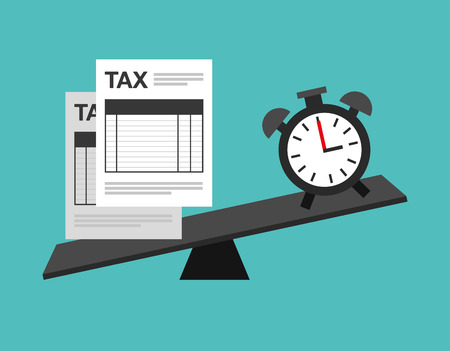Parental Trusts for Children
 There’s a common misconception that parental trusts for children are a separate type of trust in their own right.
There’s a common misconception that parental trusts for children are a separate type of trust in their own right.
This is not the case, though there are some notable differences between standard examples of the following trusts and those that are set up by parents for their own children under eighteen who have never been married or in a civil partnership.
Parental Trust Income Deemed as Settlor Income
For each of the below trusts, if all assets in a child’s trust equate to less than £100 per parent then the child’s trust income doesn’t count as the settlor’s income for income tax purposes.
For trusts that produce over this amount the entirety of the child’s income from the trust is deemed to be the settlor (parent’s) income for income tax purposes. In most cases the trustees pay the income tax on income from the trust by filling out a Trust and Estate Tax Return, then they give the settlor a statement containing all the income paid and the rates of tax charged on it (for a detailed definition of trustees and their responsibilities, see our recent article on the topic). The settlor is then required to account for the amount of tax the trustees have paid on their behalf through their Self Assessment tax return.
Types of Parental Trusts for Children
Parental trusts for children under eighteen who have never been married or in a civil partnership will be either a:
Bare Trust
Though not their primary function, as with all the trusts here, bare trusts are commonly used to pass money and assets down to children under eighteen. While the assets within a bare trust are held in the name of a trustee, the beneficiary (the child) has the right to access all capital and income from the trust once they turn eighteen.
Interest in Possession Trust
Different from bare trusts, except for the standard prerequisite that no child under eighteen can receive any income or assets from the trust until they reach the age of eighteen, an interest in possession trust differs in that once the child reaches this age the trustee must pass on all income from the trust to the beneficiary (child) as it accumulates.
Accumulation Trust
Accumulation trusts allow the trustee to accumulate income inside the trust and add this amount to the trust’s overall capital. It’s also possible, in most cases, for the trustee to pay income out of an accumulation trust in a similar fashion to discretionary trusts…
Discretionary Trust
Discretionary trusts for children allow the trustees to make decisions surrounding how the trust income (and occasionally the trust capital) is used. The trustees can decide on a number of things for the beneficiary (child), including what gets paid out, how often these payments are made, and which beneficiary to pay when, if there is more than one beneficiary.
Experienced Trust Accountants
To speak with a professional accountant to discuss which parental trust is right for you and your child, or for anything else, contact us today on 020 8780 2349 or get in touch with us via our contact page to arrange a complimentary, no obligation meeting.
Trustee Responsibilities
 Whether you’ve recently been asked if you can be a trustee for a friend or family member’s trust, or you’ve been a trustee for some time and you want to brush up on what your responsibilities to the trust are, this article will answer all (and any) questions you may have.
Whether you’ve recently been asked if you can be a trustee for a friend or family member’s trust, or you’ve been a trustee for some time and you want to brush up on what your responsibilities to the trust are, this article will answer all (and any) questions you may have.
In the simplest possible terms, a trust is a method of organising money, investments, land, or buildings (known collectively as assets) for a person or group of people. There are three types of people involved in a trust: the settlor, the trustee, and the beneficiary. The settlor is the person(s) who place the assets into a trust. The beneficiary (or beneficiaries) is the aforementioned person or group of people who benefit from the assets over time, and the trustee…
The Trustee
As a trustee you will be expected to manage the trust in the best interests of the beneficiary or beneficiaries. In the words of the Money Advice Service:
“As a trustee, you’re responsible for using the money or assets in a trust to benefit someone else. You won’t be able to benefit from the trust yourself (unless the trust agreement says you can). What you can and can’t do may be set out in detail in the trust document.”
Tax Responsibilities
Trustees hold the sole responsibility for reporting and paying tax on behalf of the trust. If there is more than one trustee (you’re not the only trustee for your specific trust), one of you must be nominated the ‘principal acting trustee’ and manage the trust’s tax affairs by yourself.
Assuming you’re the only trustee, or you’re nominated the principal acting trustee, you are required to register the trust with HM Revenue and Customs (HMRC) by 5 October of the tax year after the trust is set up. To do this you’ll need to complete form 41G and send it to HMRC’s trust and estates department.
Once the trust is registered you’ll be required to send HMRC an annual Self Assessment tax return regarding the trust’s income and any gains.
Reporting Responsibilities
As a trustee you are also expected to report to the trust’s beneficiary or beneficiaries on what tax has been paid and what income has been created whenever they ask for this information.
If the beneficiary is a close friend or family member they will, fingers crossed, not be asking you for this information every few weeks. But as and when they do ask for this information you will be required to complete form R185, or form R185 (Settlor) if you need to report this information to a settlor who has an interest in the trust.
Experienced Trust Accountants
To speak with a professional accountant to discuss your responsibilities as a trustee, or for anything else, contact us today on 020 8780 2349 or get in touch with us via our contact page to arrange a complimentary, no obligation meeting.
Making Tax Digital: Welcome Change or Worrying Burden?
 The government’s Making Tax Digital plan was first touched upon during Budget 2015, then again in December of last year when they launched the ‘Making Tax Digital Roadmap’ in an effort to explain how their plan to turn HM Revenue and Customs (HMRC) into one of the most “digitally-advanced tax administrations in the world by 2020,” would be achieved.
The government’s Making Tax Digital plan was first touched upon during Budget 2015, then again in December of last year when they launched the ‘Making Tax Digital Roadmap’ in an effort to explain how their plan to turn HM Revenue and Customs (HMRC) into one of the most “digitally-advanced tax administrations in the world by 2020,” would be achieved.
But the question remains, despite all of the government’s assertions that Making Tax Digital will reduce the taxpaying burden for all individuals (small business owners, employed individuals with other income, retired individuals, and more), should this be seen as a welcome change for taxpayers or indeed a worrying burden?
With the consultation period on these changes due to run until 7 November of this year, here at TaxAgility we’ve looked at what Making Tax Digital may mean for you, and how we can help you to navigate these changes.
Who is Affected
If you’re a small or medium-sized business (SME) owner, self-employed, or a landlord with turnover over £10,000 per year, you will be affected by these changes. This last point refers to all landlords making over £10,000 per year (gross), even if you’re in full-time employment and you just rent out a property on the side.
There are also edge-cases that will also be affected, such as pensioners whose pension exceeds their personal allowance.
What is Required
If you’re affected by Making Tax Digital you will be required to have a digital tax account through which you will report your accounts to HMRC every three months (once a quarter) under standard categorised headings (sales, expenses, etc).
This will no doubt be a burden, as despite what the government wants to think tax is not at the forefront of most people’s minds on a day-to-day basis; that’s what accountants are for. That said, the government is correct in its assumption that more frequent reporting by those who don’t work alongside an accountant will help to keep them on top of their tax liabilities.
Is Big Brother Watching?
Though there’s really no need to be paranoid, especially if you have nothing to hide, this is a fair question and one that’s come up consistently since the government announced their ‘Making Tax Digital Roadmap’ back in December of last year.
It’s certainly true that the more we use our smartphones, tablets, and laptop computers to digitise our records and store them in ‘the cloud’ the more opportunity there will be for this data to be used against us should it get into the wrong hands. And for those of us who grew up before the computerisation of everything, the idea of taking photographs of our receipts and uploading them to the internet can seem somewhat daunting. But from working with computerised accounting software here at TaxAgility for many years we can tell you that so long as you’re sensible, computerised software is both safe and convenient.
Experienced Tax Accountants
To speak with a professional accountant to discuss the government’s upcoming Making Tax Digital changes, or for anything else, contact us today on 020 8780 2349 or get in touch with us via our contact page to arrange a complimentary, no obligation meeting.
Ten Inheritance Tax (IHT) Mistakes: And How to Avoid Them
If you’ve been reading our recent article series on inheritance tax (IHT) you’ll know the importance of planning for IHT in advance, and what forms your personal representative will need to fill in after your death.
Here we’re going to put to you a number of mistakes that it’s easy to make with regard to IHT, along with our own thoughts on how you can avoid them. Some of these mistakes are things you should look out for in the future, while others you may already be falling victim to. Once you’ve read through this list twice, take a look take a look at this other great list from The Times.
Not Planning in Advance
 It seems obvious, but this is where it all begins. If you don’t plan for the fallout of IHT in advance you could be throwing away thousands (maybe even tens of thousands) of pounds that could have otherwise benefited your beneficiaries. It’s never too early to start planning.
It seems obvious, but this is where it all begins. If you don’t plan for the fallout of IHT in advance you could be throwing away thousands (maybe even tens of thousands) of pounds that could have otherwise benefited your beneficiaries. It’s never too early to start planning.
Improper Planning of Pension Funds
Your pension fund(s) can be passed on to your dependants (spouse, children, step-children, and grandchildren) IHT free. If it’s paid to your estate after your death, or to non-dependents, it will be liable to IHT.
Not Writing Life Insurance Policies in Trust
If a life insurance policy is written into trust, on your death the proceeds from the policy can be paid directly to your beneficiaries instead of to your estate, thus its value won’t add to the value of your estate.
Avoiding Generational Planning
Talking about money, inheritance, and Wills with your family is never easy. But avoiding these conversations may be an even bigger mistake when it comes to IHT, as generational planning with regard to wealth creation and preservation can save your estate thousands of pounds.
Having an Outdated Will
Your Will is outdated if, among other things, any of the beneficiaries have died, any notable assets no longer belong to you, or it refers to your ‘spouse’ but you have since divorced. Make an effort to update your Will regularly.
Trying to Avoid IHT by Living Abroad
Living abroad doesn’t necessarily mean your estate is exempt from IHT upon your death, especially if you wish to be buried in the UK. If you’re currently living abroad ask a UK-based accountant about your specific situation.
Having Low Estate Liquidity
Having low estate liquidity means you don’t have enough (or much) cash available at your death to cover IHT, without assets needing to be sold to cover this bill. Consider taking out life insurance to help overcome any deficit.
Gifts Made With Reservation
If you’ve given a gift with reservation in the past this may come back to bite your estate after your death. One of the best examples of this is gifting your home to your children, then continuing to live in it rent free.
Losing the Family Home
This may not be as much of an issue in upcoming tax years’ as an increase to the current IHT allowance of £175,000 between now and 2020, commonly known as a family home allowance, will work to ensure that all family homes £1m and below (two spousal allowances of £500,000 each) can be passed down IHT free.
Not Speaking with a Professional
Last but not least, when it comes to IHT one of the biggest mistakes you can make is not speaking with a professional sooner! Here at TaxAgility our professional accountants are experienced in everything related to IHT; they’re here to save you money.
Experienced Inheritance Tax Accountants
To speak with a professional accountant to discuss more ways you can maximise the value of your estate with inheritance tax planning, contact us today on 020 8780 2349 or get in touch with us via our contact page to arrange a complimentary, no obligation meeting.
Inheritance Tax (IHT) Guide to Completing Forms
 When you’re acting as a personal representative for the estate of a deceased person (often a spouse, parent, or older relative) you can save yourself a lot of time by using this short guide that explains what forms you’ll need to complete, depending on your unique situation.
When you’re acting as a personal representative for the estate of a deceased person (often a spouse, parent, or older relative) you can save yourself a lot of time by using this short guide that explains what forms you’ll need to complete, depending on your unique situation.
In this capacity you’ll be known as the executor if you’re working with a valid Will, or an administrator if the deceased person had no Will, or their Will is deemed invalid.
Grant of Representation
The Grant of Representation is a certificate with the names of the personal representative(s) of the case, along with a document that you, as a personal representative, are using as evidence of your entitlement to act as the executor/administrator of the deceased person’s estate.
Which Inheritance Tax (IHT) Forms?
The number of forms you’ll have to fill in as the estate’s executor/administrator will depend entirely on whether or not there is IHT to pay and, if no IHT is due, how easily you can prove this.
Forms IHT205 and IHT217
If there is no IHT to pay you only need to fill in form IHT205. There’s no IHT due if the value of the estate is below the £325,000 (2016-17) threshold, or if its full value if left to a charity or a community amateur sports club.
If the individual who died had a spouse or civil partner who didn’t use any or part of their IHT threshold, you can transfer up to 100% of it, thus making it possible for an estate worth up to £650,000 (2016-17) to be IHT exempt. In this situation you’ll need to complete form IHT217 alongside IHT205, and send it in with any supporting evidence.
Form IHT400
If there is IHT to pay you need to fill in form IHT400, along with a number of supplementary pages (forms IHT401-430) depending on the details of the deceased person’s estate. These supplementary forms can all be found on this page (scroll down until you reach the ‘supplementary pages’ heading).
In certain cases estates with no IHT to pay will be required to fill in form IHT400, along with a number of supplementary pages, if certain conditions can’t be met within form IHT205. If you believe the estate you’re a personal representative of owes no IHT, we strongly recommend you read form IHT205 all the way through before you begin filling it in.
Regardless of what forms you’re sending in, they must be received by HM Revenue and Customs (HMRC) “within a year of the end of the month the person died,” or you risk receiving a penalty.
Experienced Inheritance Tax Accountants
To speak with a professional accountant to discuss which inheritance tax forms you need to complete if you’re a personal representative of an estate, or for anything else, contact us today on 020 8780 2349 or get in touch with us via our contact page to arrange a complimentary, no obligation meeting.





